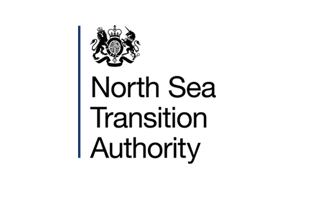
Operators must apply to the NSTA for relevant consents and approvals to carry out well related activities.
Here is a downloadable copy of the NSTA Guidance on the Onshore Regulatory Regime. This guidance, which consolidates previously available guidance, sets out how the NSTA will normally consider stated matters and is not a substitute for any regulation or law and is not legal advice.
Well Operations Notifications Sytems (WONS)
The Well Operations Notifications System (WONS) is an Energy Portal application that allows operators and licensees to apply for, and receive consent from the NSTA for a wide range of drilling and well-related activities. WONS will notify the NSTA once well-related activities have been completed.
The primary focus of WONS is the technical (geological and geophysical) basis for planned wells, collating information and assigning consent for activities required under the model clauses of PEDLs.
Licensees should apply for a UK Energy Portal account with WONS access at the helpdesk ukop@nstauthority.co.uk (0300 067 1682) and must identify designated contacts within their organisation(s) who have authority to act on behalf of the organisation.
For WONS application support please contact wons@nstauthority.co.uk
For Suspension and Abandonment applications please contact the Well Decommissioning Advisor: Claire.ralph@nstauthority
When the NSTA receives an application for consent to drill or to side-track a well, the NSTA will review the operator’s financial capability (more information on the NSTA’s assessment of financial capability). The NSTA will notify the Local Planning Authority, Environment Agency (EA) and the Health and Safety Executive (HSE) of planned activity and, in determining whether to give its consent to relevant operations, the NSTA will, amongst other things, take into account the position of other relevant regulators.
A minimum of 28 days notice is required for consent to drilling operations once all the information is provided, but licensees are encouraged to have pre-application discussions with the NSTA at an early stage in the well planning process.
Any well consent issued since April 2016, includes a condition that Department for Business, Energy and Industrial Strategy (DESNZ) consent is required where operations will involve associated hydraulic fracturing (see Hydraulic Fracture Consent section).
To apply for consent to drill or side-track a well, the operator should apply for consent in WONS on the UK Energy Portal.
All applications for well consents require the following supporting information.
If a licensee wishes to get petroleum from a well, it will need to apply for approval of completion programme of work.
“Completion Work”, means work, by way of the installation of a casing or equipment or otherwise for the purpose of bringing the well into use as a development well. “Re-completion” activities are those that alter the original completion and include changes to the equipment (including tubulars), that are installed in the well and perforations, hydraulic fracturing/stimulation and any change of use e.g. from producer to injector. Replacement of like for like equipment e.g. the same model of gas lift valves or the reperforation of an existing zone is not considered to be a re-completion activity.
“Development Well” means a well which the licensee uses or intends to use in connection with the getting of petroleum in the licensed area, other than a well which for the time being the licensee uses or intends to use only for searching for petroleum.
The operator should apply in WONS on the UK Energy Portal, and provide a supporting document with detail information on the proposed completion programme of work.
If hydraulic fracturing is proposed as part of the completion programme of work, the NSTA’s agreement to a Hydraulic Fracture Plan is necessary (see relevant section) and if the proposed injection volume exceeds the threshold for “Associated Hydraulic Fracturing” in section 4A of the Petroleum Act 1998 in addition to the NSTA’s completion approval, a separate Hydraulic Fracture Consent (HFC) granted by DESNZ Secretary of State is required.
Shut in Notifications: Development Wells that are “constructed” and “operating” will be subjected to notifications if they are shut in, by means of closing downhole or surface valves. There is a “shut in” notification in WONS and an equivalent notification when the well is opened up and flows again. Shut in periods of less than three months do not need to be notified.
Well Tests: Drill Stem Tests (DST) - Standard Drill Stem Tests following drilling or well intervention operations should be included as part of the assessment of the proposed drilling or intervention operations and details provided in the WONS application.
When testing discrete sections of the well, each section can be produced for a maximum of 96 hours but the total quantity of oil produced from all sections should not exceed 2,000 tonnes in total in order for the test not to be classes as an Extended Well Test (EWT). A well test would be classified as an EWT where the well test of the different sections exceeds the 96 hour threshold per section or exceeds the 2,000 tonnes of oil and a total combined quantity for all tested sections. Volumes produced during clean-up flow periods should be included and count towards the 2,000 tonnes of oil and the 96 hour thresholds, but the 96 hour period relates to the production duration and therefore periods between production, e.g. when the well is shut in to build up pressure, is not counted in the overall 96 hours.
For exploration and appraisal wells, consent for up to 96 hours or 2000 tonnes of test production (whichever is exceeded first) may be included in the well consent issued by WONS. Applicants are required to complete the appropriate WONS well test application for this purpose and upload a document describing the rationale and planned operation of the test. This volume does include any clean-up period, so if there is any risk of breaching these limits, operators are advised to make an application for an EWT to cover operational contingencies.
The NSTA may consider authorising production testing over periods less than 96 hours (or max 2000 tonnes) as part of the drilling consent but any more extensive testing is considered to be an Extended Well Test (EWT). The NSTA may authorise an EWT from an exploration or appraisal well prior to a full field development approval if it can be demonstrated that the licensees will thereby gain the technical understanding or confidence in the performance of the field needed to progress towards a development.
The operator is required to submit an application for an EWT approval through the Well Operations Notification System (WONS) on the UK Energy Portal, and provide the required supporting information (including a description of the objective and rationale for the test programme, the proposed test period, relevant works and the estimated range of volumes of oil and gas to be won and produced from the well).
Licensees must meet certain financial criteria to demonstrate that they have the financial capacity to conduct the works and fund their liabilities (see financial guidance).
To approve an EWT, the NSTA requires a formal letter of application containing the following information:
- the relevant works which the licensee proposes to erect or carry out during that period;
- the proposed location of the relevant works (pad area coordinates shown on a plat that forms part of the Mining Waste Permit), a detailed plan of activity, objectives of the test and the requested duration; and
- maximum quantities of oil and/or gas to be produced and saved or flared/vented in the period of the requested EWT (in tonnes and cubic metres)
“Relevant Works” are defined as: “any structure and any other works whatsoever which are intended by the licensee to be permanent and are neither designed to be moved from place to place without major dismantling nor intended by the licensee to be used only for searching for Petroleum”
Similar to the requirements at the well consent stage, the following letters are required:
- a board letter confirming scope of insurance or availability of necessary funds for any required remedial work
- a board letter confirming availability of planning permission and indication of on-going planning disputes
The NSTA will notify the Environment Agency and the Health and Safety Executive of planned activity and, in determining whether to give its consent to relevant operations, the NSTA will, amongst other things, take into account the position of other relevant regulators
An EWT should have realistic and definable appraisal objectives essential to the success of a development and not be prejudicial to ultimate recovery. There are no strict criteria governing the maximum volume to be produced or the duration of an EWT, but they are usually issued for 90 days to allow for operational delays. The duration may be extended if there is a technical justification, but it should be noted that EWTs are not an alternative to production under a Field Development Plan (FDP). There is no obligation to proceed with a development following an EWT.
Throughout the test, the operator must keep the NSTA informed of activity and must report monthly oil, gas and water production figures in the UK Energy Portal. Within 30 days of completion of the EWT, the operator must submit to the NSTA an EWT report fully detailing the test results.
The operator must not suspend a well or recommence operations except with consent of the NSTA. Applications for these activities must be submitted in WONS and the NSTA’s consent to well suspension or temporary plugging given before this operational activity is undertaken.
If well suspension is one possible outcome after drilling, then an application to suspend the well should be applied for in parallel with the application for a well consent. A decision rationale is required which includes a plan for the length of time the well might remain suspended while well studies or other work is completed that is necessary to make a decision regarding well abandonment. Then once the well is drilled, if suspension is desired, a Wellbore Update Notification (WUN) in WONS is required to report what was encountered in the well and the plan for analysis before a decision on well abandonment is made.
The well may remain suspended for a maximum period of two years and before the expiration of this period, in accordance with the terms of the Licence, the Licensee must have either applied to the NSTA to recommence operations or submitted a well abandonment programme to the NSTA for approval to plug and abandon the well. Licensees should be aware that, in general, any extension to the duration of a consent to suspend will be considered on a case-by-case basis depending on the circumstances at that time. The NSTA may consider consenting to a request to extend a currently consented suspension subject to, among other things, submission of a satisfactorily detailed well abandonment strategy and plan.
For Suspension and Abandonment applications please contact the Well Decommissioning Advisor: Claire.ralph@nstauthority
The licence prohibits the operator from abandoning any well without the consent of the NSTA. The operator must submit an application for consent to abandon a well in WONS on the UK Energy Portal, and provide detailed information regarding the results of the well. NSTA’s consent to well abandonment must be given before this operational activity is undertaken.
If proposed abandonment is the last well in a previously producing field see relevant Cessation of Production (COP) guidance under Development and Production.
After well abandonment consent is given, the operator must notify the NSTA upon completion of the work and the Independent Well Inspector Report and well engineering diagram must be submitted at this time.
The relevant local mineral planning authorities, Environment Agency (EA), the Coal Authority and Health and Safety Executive (HSE) also have specific regulatory requirements which must be met.
For Suspension and Abandonment applications please contact the Well Decommissioning Advisor: Claire.ralph@nstauthority
Hydraulic Fracturing Operations
The Hydraulic Fracture Plan (HFP) sets out how the operator will control and monitor the fracturing process. It will be agreed independently by the NSTA and the Environment Agency (EA). The Health and Safety Executive (HSE) will also have an opportunity to comment. The NSTA will assess any risks of seismic activity and must be satisfied that controls are in place to minimise disturbance to those living and working nearby, and to reduce the risk of any damage.
Operators are required to identify and assess the locations of existing faults to prevent hydraulic fracturing from taking place near them.
To note, the NSTA agreement to an HFP is not a separate regulatory consent or approval, but part of NSTA granting approval to complete a well.
If the proposed injection volumes fall below the DESNZ associated hydraulic fracturing thresholds, the NSTA may decide less information or monitoring is appropriate, but an HFP will always still be required.
A summary of what the NSTA may require is as follows:
- a map and seismic lines showing faults near the well and along the well path, with a summary assessment of faulting and formation stresses in the area and the risk that the operations could reactivate existing faults;
- information on the local background seismicity and assessment of the risk of induced seismicity;
- a comparison of proposed activity to any previous operations and relationship to historical seismicity;
- summary of the planned operations, including the techniques to be used, the location of monitoring points, stages, pumping pressures, volumes and the predicted extent of each proposed fracturing event;
- proposed measures to mitigate the risk of inducing an earthquake and a description of decision tree for a real-time traffic light scheme for monitoring local seismicity;
- the processes and procedures that will be put in place during hydraulic fracturing for fracture height monitoring to identify where the fractures are within the target formation and ensure that they are not near the permitted boundary;
- in the event that the fractures extend beyond the EA permit boundary, the steps that would be taken to assess and, if necessary, mitigate the effect and limit further propagation outside the target rocks;
- the type and duration of monitoring and reporting during and/or after hydraulic fracturing has taken place and the geological data to be published; and
- procedures for post fracturing reporting of the location, orientation and extent of the induced fractures to demonstrate that the EA permit has been complied with. This will need to include provision for reporting on proposed mitigation measures to prevent propagation, should fractures extend to within a short distance of the permitted boundary
Similar to the requirements at the well consent stage, the following letters are required:
- a board letter confirming scope of insurance (including third party cover for any seismicity related damage), or availability of necessary funds for any required remedial work
- a board letter confirming availability of planning permission and indication of on-going planning disputes
The NSTA will notify the EA and the HSE of planned activity and, in determining whether to give its consent to relevant operations, the NSTA will, amongst other things, take into account the position of other relevant regulators.
The Licensee must compile a report containing data in respect of the geology, operations or results associated with hydraulic fracturing of shale or other strata encased in shale. The NSTA are entitled to publish the data six months after the final hydraulic fracturing operation.
Well consents issued after 6 April 2016 contain a requirement that the licensee obtain consent from the Secretary of State (SoS) for the Department for Energy Security and Net Zero (DESNZ) in the form of a Hydraulic Fracture Consent (HFC) before carrying out any associated hydraulic fracturing.
The HFC is a separate authorisation and does not form part of the NSTA’s consenting regime. More information on HFCs can be found on the Government’s website.


